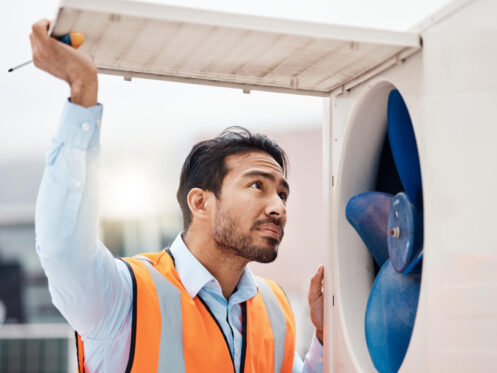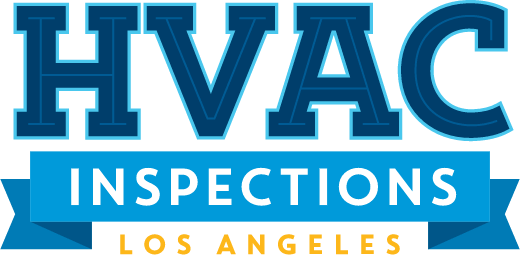Commercial HVAC systems are the backbone of day-to-day comfort in many Manhattan Beach businesses. Whether it’s keeping an office building cool during a sweltering summer day or ensuring a stable environment in a commercial space, these systems work around the clock. But behind that function are small components that most people never think about—sensors. These sensors are responsible for monitoring conditions like temperature, pressure, and humidity so the system knows when to kick in, shut down, or adjust airflow. When even one of them malfunctions, the entire system’s performance can take a hit.
Sensor issues may start small, but left unchecked, they can lead to bigger breakdowns, uneven temperatures across spaces, or even complete system shutdowns. Given that the summer months are peak time for HVAC usage in Manhattan Beach, businesses need to stay ahead of problems. Knowing what types of sensors your system has, how they work, and the signs of failure can prevent uncomfortable disruptions and longer downtimes.
Types Of HVAC Sensors Used In Commercial Systems
Sensors are the detection tools that allow a commercial HVAC system to run efficiently. Each one is designed to retrieve specific information and send it back to the control board, allowing the system to make accurate decisions based on real-time conditions.
Here are the most common HVAC sensors and their functions:
– Temperature Sensors: These monitor air temperature and help keep it within the set range. If they fail, spaces can become too hot or too cold.
– Pressure Sensors: These keep track of airflow and refrigerant pressure. A bad pressure sensor can trigger system shutdowns or restrict airflow.
– Humidity Sensors: These detect moisture levels in the air and influence how the system manages indoor air quality.
– Air Quality Sensors: Though less common, these are sometimes used to monitor carbon dioxide or other particles, especially in updated or eco-focused commercial spaces.
Each sensor is typically positioned in a system component where it can gather the most accurate data. For instance, temperature sensors are often placed in supply or return ducts, while pressure sensors sit within refrigerant lines or near the blower assembly.
If any one of these devices sends inaccurate readings or stops communicating altogether, the system can’t adjust properly. This can cause comfort issues, wasted energy, or even damage over time. For example, if a temperature sensor drifts off by even a few degrees, the space might not cool as expected, and the system could end up running nonstop trying to hit the wrong target.
Main Reasons Sensors Fail In Commercial HVAC Systems
Sensor issues don’t always pop up without a cause. In many cases, their failure is tied to conditions that could’ve been addressed ahead of time. These failures tend to build up gradually before creating serious disruptions.
Here are a few triggers for HVAC sensor failures:
1. Age and Wear: Like most components, sensors degrade over time. The more hours your HVAC system runs, the more physical stress those tiny instruments take.
2. Exposure to Contaminants: Dirt, oil, moisture, and even salty air—especially in coastal areas like Manhattan Beach—can interfere with a sensor’s ability to detect accurate readings.
3. Poor Installation: If a sensor isn’t properly placed or secured, it may read conditions inaccurately. It can also get damaged more easily during routine maintenance or operation.
4. Electrical Damage: Power surges or inconsistent voltage can shorten a sensor’s lifespan or lead to total failure.
5. Lack of Regular Inspections: When inspections are skipped, dirty or failing sensors often go unnoticed until the problem is obvious—such as uneven cooling or incorrect airflow.
In Manhattan Beach, the mix of ocean air and high summertime use places more stress on HVAC components. Salt in the air can corrode sensitive parts faster than in inland areas. Pair that with high humidity and long cooling cycles, and it’s easy to see how sensors can go downhill faster without attention. Keeping up with regular checks and knowing what to look out for helps spot these issues before they impact the workspace.
Warning Signs That Sensors May Be Failing
Spotting sensor issues early can prevent cooling problems before they get out of control. Since these components don’t always fail suddenly, the signs are often subtle at first. The key is to notice behavioral changes in your HVAC system—things that deviate from how it normally operates.
Common signs of sensor problems include:
– Inconsistent cooling across rooms or zones
– AC running constantly or cycling on and off too frequently
– Unexpected spikes in energy bills
– Unusual system alerts or fault codes on building control panels
– Delays in response after temperature settings are adjusted
If you manage or own a commercial property in Manhattan Beach, these symptoms can be especially noticeable during the summer. A sensor that’s failing may misread the indoor temperature, causing the system to keep running long after the space is cool or shut off too soon. One local office building we worked with had this issue in a conference room that never seemed comfortable regardless of the thermostat setting. Turned out, a failing return air temperature sensor was giving false low readings, making the system shut down early.
It’s also worth noting that system components might seem to operate just fine until temperatures outside really climb. That’s when sensors with marginal errors become more problematic, leading to unpredictable system behavior. If any of these warning signs pop up, don’t wait—have the system checked before small errors turn into shutdowns.
Why Regular Commercial HVAC Inspections Make a Difference
Scheduled inspections aren’t about solving problems as much as preventing them. With commercial HVAC systems, especially in places like Manhattan Beach where summer use is heavy, sensor reliability can weaken over time even if other parts of the system seem fine. Without regular checks, problems hide in plain sight—like sensors drifting out of range, wiring faults, or grime buildup interfering with readings.
Our technicians focus on early detection. During a commercial HVAC inspection, we assess sensor accuracy, inspect wiring and connections, and clean or recalibrate devices when needed. For businesses, this means fewer surprises, smoother system performance, and better control over cooling costs. Sensors that are correctly measuring and reporting data give building managers the ability to maintain indoor comfort without second-guessing system behavior.
These visits also help identify patterns. If a sensor has been acting up repeatedly, it’s worth investigating deeper system issues or considering a more durable replacement. Without that attention, a small fix today can evolve into a sudden emergency next month. Even for newer systems, inspections offer peace of mind that everything is functioning as expected before the summer heat pushes the system to its limits.
Keep Sensors Working Smoothly All Year
For commercial spaces in Manhattan Beach, steady HVAC performance is about having sensors that respond accurately to your system’s demands. They don’t last forever, and they certainly don’t stay clean or calibrated indefinitely. Salt in the air, long cooling cycles, and high humidity all play a role in wearing them down faster than usual—especially when left unchecked.
Waiting until something goes wrong usually means dealing with downtime, frustrated tenants or staff, and emergency repairs. But taking a proactive approach to upkeep keeps your system stable and your building comfortable, even when outdoor conditions shift quickly. Regular inspection and service catch those small sensor issues before they become full-blown failures.
Don’t assume a system running means it’s running efficiently. Even a minor issue with one sensor can start to create problems that raise operating costs or reduce performance across the board. Inspections help keep everything on track, so your building stays cool and your HVAC system works like it should—reliably and without hassle.
HVAC Inspections Los Angeles understands that a well-maintained system is key to smooth operations in Manhattan Beach, and a thorough commercial HVAC inspection in Manhattan Beach can help pinpoint sensor issues early so costly disruptions are avoided. Our professionals focus on these details to ensure your cooling is reliable and efficient during the busy summer months; for a quick estimate or to schedule service, please contact us today.






